Poor People Making Jewels For The Rich
Senor Carreras of ENASA announced at the launch of the
1951 Pegaso...'(we) are poor people making jewels for the rich'. The very high price of the car confirmed "that it was exclusively for the rich, and the elaborate specification and superb workmanship qualified it as a jewel of a car, a jewel of outstanding quality and exceptional rarity".
ENASA, or in full, Empresa Nacional de Autocamiones SA, started out in 1946 building buses, along with trucks, all carrying the emblem of Pegasus, the flying horse. The factory in which they worked wasonce the centrepiece of
Hispano-Suiza, where cars were made from 1910 (when the original factory near the centre of Barcelona proved too small) until the Spanish
Hispano-Suiza company came to its end in 1944.
It was a very complete and spotlessly clean factory in which the assembly of the Pegaso engine was conducted as though it were a surgical operation. The firm's technicians maintained the strictest control over every little component - and indeed almost everything in the vehicles was made on the spot. This included
steering gears, transmissions, springs and all the other parts that was the custom of other manufacturers to purchase from outside suppliers.
ENASA even worked out in their own laboratories how to make aluminium bearings, a secret formerly known only to a few German technologists, but important to Spain because of the then shortage of copper - an ironic situation in a country that had been the ancient world's main source of it, where the Rio Tinto used to run red with the stain of the metal.
Building Cars to train Apprentices
The decision to build (exceptional) cars along with their commercial vehicle operation was taken not so much as to be a money making concern, but to train apprentices. There, as in other factories, newcomers to the industry's crafts had to learn to work to the very highest standards: they would work slowly, and the reject rate would be high, but the vehicles that emerged would be far superior to anything that might be seen coming from an ordinary mass-production factory.
Wilfredo Ricart
To design the car ENASA hired Wilfredo Ricart, who had been with Alfa Romeo from 1936 until 1945. He was a Spaniard, born in 1898, with a history of design including sports cars, racing cars and diesel engines; and during his period with Alfa Romeo he added a 28-cylinder aero engine to his record, and a V16 three-litre
Grand Prix car whose engine incorporated 64 valves, five superchargers, two carburettors, and roller bearings everywhere. History records him as a brilliant engineer, one with an overriding principal of doing things thoroughly or not at all, and he antagonised Ferrari so much when he went to Alfa Romeo that Ferrari soon left.
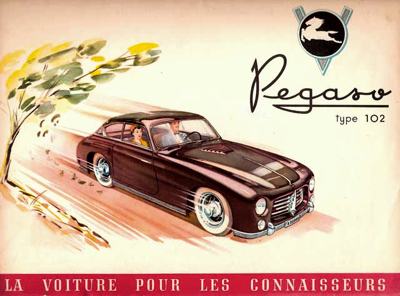 1951 Pegaso Z-102.
1951 Pegaso Z-102.
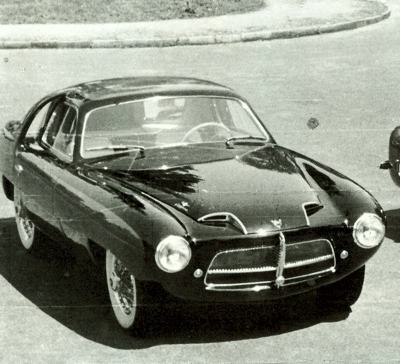 1953 Pegaso with body by Touring of Milan.
1953 Pegaso with body by Touring of Milan.
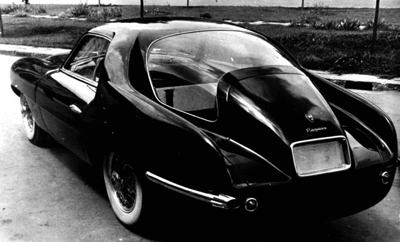 Rear view of the same 1953 Pegaso - beautiful.
Rear view of the same 1953 Pegaso - beautiful.
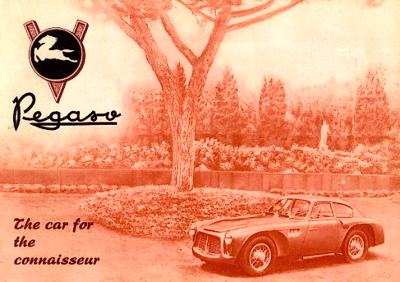 1953 Pegaso Z-102.
1953 Pegaso Z-102.
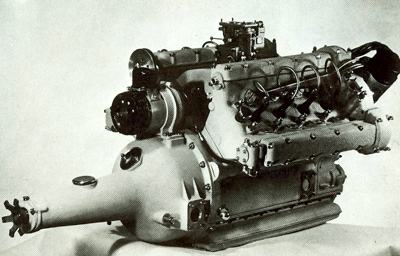 The Pegaso V8 engine. Introduced in 1951, it was at the time a very sophisticated design, with four overhead camshafts, dry-sump lubrication and fed via one, two or four Weber carburettors. During its life, it would grow from 2472cc to 3178cc.
The Pegaso V8 engine. Introduced in 1951, it was at the time a very sophisticated design, with four overhead camshafts, dry-sump lubrication and fed via one, two or four Weber carburettors. During its life, it would grow from 2472cc to 3178cc.
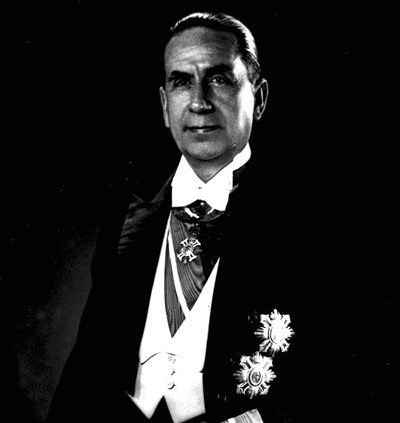 Don Wilfredo Ricart.
Don Wilfredo Ricart.
|
Ricart used to wear shoes with extremely thick rubber soles, and when Ferrari one day asked him why, Ricart replied that a great engineer's brain must be carefully sprung against the inequalities of the ground, in case its delicate mechanism were disturbed. The mechanism was still functioning well a decade later, when he returned to his homeland and to the design of the Pegaso. The car had the most mouth-watering specification of any in the world, being tantamount to a de-tuned
Grand Prix racer with road-going body and equipment.
The Pegaso Z102
When the first car was shown to the public at the Paris Salon in the autumn of 1951, its engine capacity of 2474cc was remarked on as fitting the limit for
Grand Prix racing from 1954 onwards; and when the course for the Spanish
Grand Prix a few weeks later was opened by three Pegasos driven round it at a spanking pace, people could not forebear to ask whether Pegaso might enter the lists of racing.
At
Grand Prix level, they never did, while in sports-car events they were modest in most of their ambitions and attainments. In their intended role as very fast road cars, though, they quickly acquired a reputation that justified the promise of their specifications.
The first model was the Z102, and was a sensation. Its V8 engine (bore 75 mm, stroke 70 mm) had dry-sump lubrication, four overhead camshafts and one, two or four Weber carburettors. Fuel being still of poor quality in those days, the standard compression ratio was 7.5:1, but the engine nevertheless gave a minimum of 170 bhp at 6300 rpm, with considerably more to come from higher compression and elaborate carburation. The gearbox was a five-speed close-ratio dog-engaged type integral with the final drive, which incorporated a limited-slip differential of the ZF type.
The Best de Dion Setup - Ever
Around this transmission complex was arranged the rear suspension, of reversed de Dion type: the dead axle beam passed in front of the transmission, and was located by a pair of radius arms which converged on a single point well to the rear. Thus the motion of the axle was geometrically purer than that of any other de Dion axle of the time (or for many years later), while the suspension loads could be taken out at widely separated points: thrust and braking forces were fed through the rear pivot, spring loads transmitted through linkages to torsion bars, anchored to the chassis ahead of the rear axle.
Borrani Aluminium-Rimmed Wheels
Torsion bars also featured at the front, where the wheels were independently mounted on paired wishbones. All four wheels carried copiously ventilated
brakes of exceptional size and power, the fourteen-inch drums housing Lockheed components that - together with the Bosch ignition and the Borrani aluminium-rimmed wheels - were practically the only components of foreign origin. The Pirelli
tyres were made in Spain and were of generous size by the standards of the day, combining with the excellence of the suspension and the carefully arranged distribution of masses to give the Pegaso superb handling.
Almost a GP Car
The Pegaso was one of those well balanced cars that could be driven in whatever style the driver chose to dictate, its relatively short wheelbase of 92 inches and its high polar moments of inertia in pitch and yaw giving it a balance akin to that of then current
Grand Prix cars, while its suspension geometry was actually superior. Only in its chassis was its design questionable: this was a multi-tubular fabrication based on square-section steel tubes and was sufficiently rigid at each end, but beam and torsional stiffness appeared to be compromised in the shallowest part of the chassis under the door sills at mid wheelbase.
The Flying Mile at 152.001 mph
The choice of carburettors and compression ratios was the prelude to a proliferation of changes and options that followed in rapid succession. The Z102B had its cylinder bores enlarged to give 2.8 litres displacement and 210 bhp; the Z102SS went even further with 3.2 litres and anything from 210 to 280 bhp for, by this time, any of the cars could be supplied with a Roots supercharger. One of the blown cars, with a simple open two-seater body, covered the flying mile in Belgium at 152.001 mph in 1953, by which time the make had already made some tentative forays into motor sport. It was a Pegaso that set a new record for the hill-climb at Rabassada.
Joaquin Palacio
By 1953 the company felt tempted to enter a pair of cars for
Le Mans, and built very special asymmetrical versions of the blown 2.8 for the purpose. They were faintly reminiscent of Taruffi's twin-boom record-breaking cars, but one crashed in practice for the race, killing the driver, Jover, and the other was withdrawn.
In the following year, a Pegaso owned by the son of Cuba's President Trujillo was driven by Joaquin Palacio in the formidable Carrera Pan Americana; it had mounted to second place overall when it was eliminated by somebody else's accident. If mechanical specifications could be so variable, the variety; of bodies carried by the Pegaso was even more noteworthy. The firm's own standard body, a two-seater GT coupe in the Italian idiom, was distinctive in appearance and good looking, simple and almost severe in its external appearance.
Saoutchik of Paris and Touring of Milan
This sobriety was reflected by the firm's advertising, which always appeared as a masterpiece of understatement; but if an owner chose, the interior of the car could be just as severe, the all-up weight of the fully trimmed and sturdy standard car could be reduced from 24 cwt to near the bare ton, by drastic pruning which left nothing more than a flock spray to decorate the inner surfaces of the body panels. Much the most outstanding bodies, however, were created by the great custom builders of the day, notable contributions being made by Saoutchik of Paris and by Touring of Milan.
The Pegaso Thrill
The latter showed in 1953 a Berlinetta that they christened Thrill, and to this day it remains one of the greatest production car designs ever: form-fitting seats and lap straps were a feature of the interior, but the most notable device was a pair of airfoil-section 'flying buttresses', extending from the hips to the shoulders of the roof, just behind the side windows. These were claimed to control the boundary-layer air flow around the sides of the canopy and over the extensively glazed tapering tail, and they were blended into the body panels with impeccable smoothness, the finish on this body being exceptional.
In another sense, the finish of the Pegaso was unfortunately nearer than could be anticipated. After producing yet more variants, known as the Z103, with pushrod V8 engines of 4, 4.5 and 4.7 litres, Ricart retired in 1958 and the policy of the company then changed in favour of concentrating on the heavy vehicles that had always been its mainstay. Only three or four Z103 cars were made, and only 125 Z102s, mostly to special order. The end was ugly. A general lack of interest went so far as to allow spare parts, moulds and
bodywork to be sold as scrap metal. Much of the company's archives were also lost, with the consequent dispersion of the technical manufacturing drawings.



